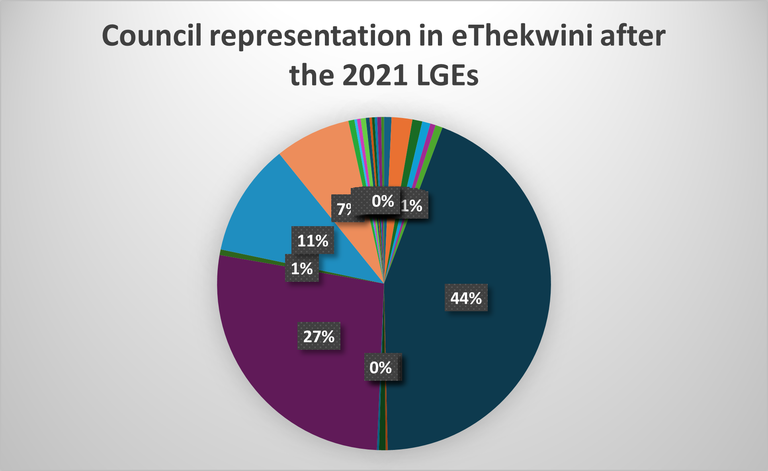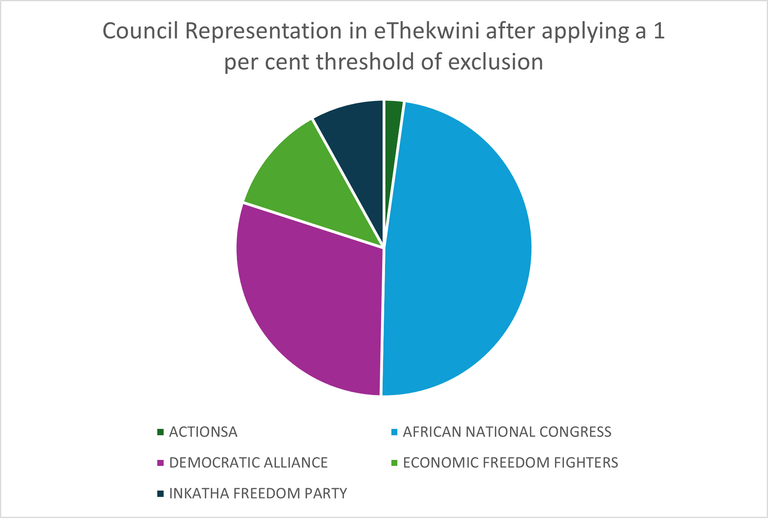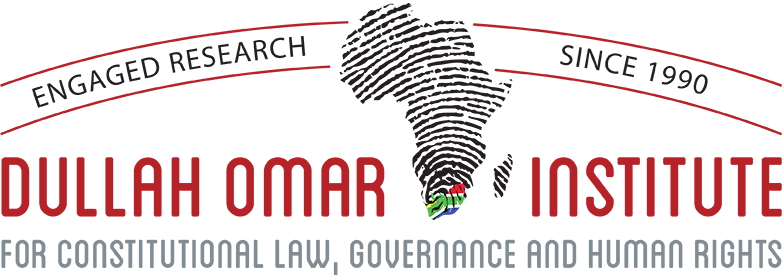Unpacking the new proposals in the “Second Municipal Structures Amendment Bill of 2025”
Private members’ bills refer to bills that are introduced by members of parliament (i.e., backbenchers) and not ministers from cabinet. Such Bills generally do not gain much traction in the National Assembly. However, the proposals of this ‘Second Structures Amendment Bill’ are worthy of further discussion.
As with the Municipal Structures Amendment Bill of 2024 (commonly referred to as the “Coalition Bill”), the “Second Municipal Structures Amendment Bill of 2025” aims to strengthen the institutional structures of municipalities to support stable coalition governance in municipalities. It proposes two main changes: (1) extending the timeframe for calling the first council meeting and electing political office-bearers from 14 to 30 days and (2) amending the seat allocation formula. This article discusses the utility of these reforms in municipalities where no single party commands an outright majority.
Is 14 days sufficient to negotiate and establish durable coalition governments?
The Structures Act currently requires that the first council meeting be held within 14 days after the council has been declared elected. This 14-day period is generally used to attend to priority matters within the coalition negotiation phase, being the distribution of political office-bearer positions in the municipality.
While political parties commonly conclude coalition negotiations and announce their coalition arrangements within the 14-day timeframe, many of the coalition alliances formed after this period often terminate prematurely. This generally manifests in no-confidence motions, an act that officially collapse the coalition. Thus, it can be argued that, in many cases, coalition arrangements were established to comply with the 14-day requirement, with negotiations often extending beyond this period, as evinced by shifting alliances and the reallocation of political office-bearer positions that reflect their preferred coalition arrangements. For this reason, organs of state, civil society, scholars and policymakers have recommended for the extension of the 14-day period, arguing that affording parties more time to negotiate will not only be in line with international best practices but may also result in more durable coalition arrangements. The next section will discuss how the “Second Municipal Structures Amendment Bill” aims to implement this proposal by extending various timeframes to facilitate stable coalition governance in municipalities.
Calling the first council meeting
To remedy the above challenge to stable coalition governance, the “Second Municipal Structures Amendment Bill” aims to amend section 29(2) of the Structures Act by extending the timeframe for calling the first council meeting from 14 to 30 days after the council was declared elected. This reform will afford coalition partners an additional 16 days to negotiate, identify, reach consensus on, and select a fit and proper individual to take the office of the speaker, which must be elected at the first council sitting (section 36(2) of the Structures Act).
The question of who occupies the position of speaker requires careful consideration. The speaker is the custodian of the Code of Conduct for Councillors and is responsible for ensuring that council business is conducted in a timely and orderly fashion. He or she acts as a neutral arbiter that must uphold that the municipality’s rules and orders during council and committee sittings and, where necessary, enforce appropriate sanctions for non-compliance. These responsibilities command a specific skill-set, objectivity and assertiveness that enables the speaker to ensure sound governance within the council and its committees.
Electing executive committee members and the executive mayor
Section 45 and 55 of the Structures Act respectively calls for the election of members of the executive committee and executive mayor within 14 days of the council’s election. As with the speaker of council, the executive committee members and the executive mayor must be elected at the first council sitting, which must take place within 14 days of the council’s election. The Coalition Bill (2024) aims to make it mandatory for municipalities without outright majorities to convert to the collective executive system. Therefore, this section is discussed within the context of the collective executive system.
The "Municipal Second Structures Amendment Bill" seeks to amend this period to 30 days. Selecting the executive committee requires careful consideration as this determination is tantamount to constructing the cabinet that will be responsible for implementing the priorities of the coalition. The calibre of individuals selected as executive committee members is an important factor to consider during coalition negotiations. Coalition partners should ensure that there is adequate strategic management capacity in the executive to effectively oversee the municipal administration. Thus, coalition partners will benefit from having additional time to identify and select suitable councillors that comprise a balance of appropriate knowledge, skills, experience and expertise to manage relations, cooperate and advance the municipality’s best interest.
Allocation of seats
1 per cent electoral – a threshold of exclusion
The Coalition Bill (2024) sought to amend Item 13(1)(a) of Schedule 1 by excluding parties that obtained 1 per cent or less of the total valid votes cast from all further calculations for purposes of allocating seats on the council. This would constitute a threshold in addition to the existing one (i.e. the seat calculation formulae). Such thresholds are referred to as ‘thresholds of exclusion’, which connotes a threshold that constitutes an additional barrier for entry into the municipal council.
Consider, for example, council representation in the eThekwini Metropolitan Municipality following the 2021 local general elections, which resulted in 24 political parties gaining representation in the council. Figure 1 below demonstrates the degree of fragmentation in the eThekwini Municipal Council while figure 2 shows the composition of the council had the 1 per cent threshold been in place prior to the 2021 local government elections.
Figure 1: Council representation in eThekwini after the 2021 LGEs


Figure 2: Council representation in eThekwini after applying a 1 per cent threshold of exclusion


The imposition of a 1 per cent threshold of exclusion would have the effect of reducing council representation by 79.16 percentage points, effectively excluding 19 smaller parties from entering the council. The result would be that the municipal council would comprise only five parties (i.e. the ANC, DA, ActionSA, EFF and IFP). Thus, while a 1 per cent threshold may appear to be minimal, the impact of a 1 per cent threshold of exclusion is statistically significant.
Amending the seat allocation formula – a threshold of inclusion
The “Second Municipal Structures Amendment Bill” aims to amend Item 13(2) of Schedule 1 by imposing a threshold of inclusion, which connotes an electoral system with built-in seat allocation formulae used to translate thousands of votes into a small number of parties that gain their share of a finite number of seats in the municipal council. In allocating the surplus seats on the council (i.e. round two of the proportional representation (PR) seat allocation process), the amendment seeks to include only parties that already obtained at least one seat in the first round to compete in the second round for the remaining seats.
Table 1: The impact of amending the seat allocation formula on representation in the eThekwini Council, 2021

Source: Independent Electoral Commission “eThekwini Municipal election results”
In applying this proposed reform to the eThekwini example, Table 1 above demonstrates that all 24 parties would make it to round 1 of the seat calculation process and are thus not outrightly excluded. However, some parties may be ousted during round two of the PR seat allocation determination. The result is that only 10 parties, as opposed to 19 parties, would be excluded from competing for surplus seats, given that they failed to secure 1 seat in the first round of the seat calculation stage.
Thus, representation in the eThekwini council, with imposition of the threshold of inclusion as proposed in the “Second Municipal Structures Amendment Bill”, would lead to a more proportional outcome. In both instances, the issue of fragmentation would be addressed but in the latter case council is reduced to 14 parties, as opposed to 5, parties. In this instance, it can be argued that the threshold of inclusion in the “Second Municipal Structures Amendment Bill” ought to be favoured as it does not outrightly exclude parties nor significantly impacts on the multi-party element that characterise South Africa’s system of representative government. Against the 1 per cent threshold, the proposed electoral reform serves as an example of a less severe remedy that could be adopted to respond to the issue of excessive fragmentation in municipalities.
Pause for caution
Policymakers must have regard to the impact of adopting both proposed reforms (i.e., the proposed amendment to Item 13(1)(a) and Item 13(2)(a)). At the moment, given that each Bill aims to amend a different section of Item 13, it appears that two proposals for electoral reform are on the table. Accepting both proposals may be undemocratic given that it will significantly reduce the number of parties represented in municipal councils. This will no doubt reinforce the position of dominant parties, who stand to benefit from the exclusion of smaller parties. With this, it is anticipated that if implemented there would be fewer hung councils, fewer minority parties, less fragmentation, and perhaps increased political stability.
Conclusion
This article discussed two reforms proposed in the “Second Municipal Structures Amendment Bill (2025)”, being the extension of the timeframes for calling the first council meeting and appointing political office-bearers in municipalities and amending the seat allocation formula in municipalities. The extension of the 14-day timeframe is welcome as it enables coalition partners to negotiate and establish coalition arrangements that are resilient to shifting externalities and stable for longer periods. In addition, the new threshold of inclusion is illustrative of a less severe remedy that is available to respond to challenges of excessive fragmentation and heightened political instability in municipal councils where no single party commands an outright majority. Together, these reforms, if implemented, may yield positive outcomes for municipalities after the 2026 local general elections.
By Jennica Beukes, Doctoral Researcher






